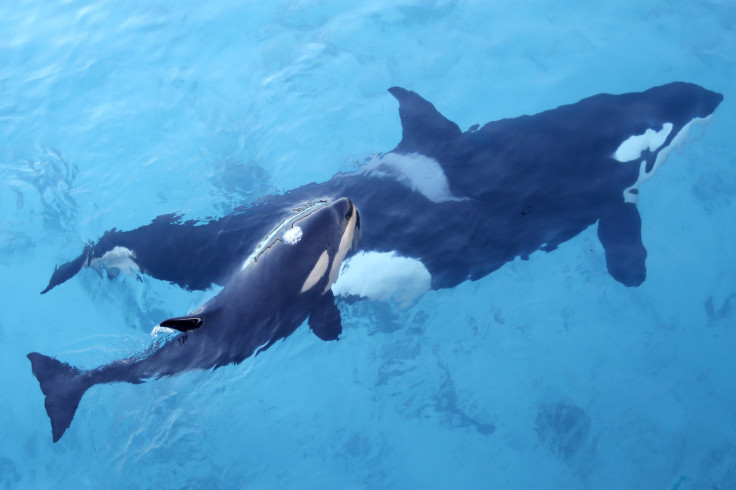Killer Whale Plays With Sea Turtle: Watch The Orca Flip Its Food From The Water [VIDEO]

A killer whale was recently spotted playing with its food.
Shooting out from a body of water in the Galapagos Islands, the massive animal flung a sea turtle in the air this summer. The launched flew much higher than the whale was able to jump. Eventually, the turtle fell back into the water.
And, thanks to the internet and the ubiquitous nature of phones and cameras capable of recording video, a group of nearby tourists was able to capture the sight for posterity. You can watch the video below.
Killer whales, as their name suggests, can be deadly predators. While they are often best known as tame mammals at Sea World, they are apex predators and so eat any range of living things. That list includes sea birds, squid, octopuses, sea turtles, sharks, rays and fish. They will sometimes eat other marine mammals, notably seals and dugongs.
When it comes to Sea World and other, similarly themed amusement parks that feature the giant sea mammals, sometimes humans can be the ones in danger. A 2013 documentary, Blackfish, told the story of an orca whale that had killed one of its trainers in 2010 at SeaWorld Orlando. The killer whale, named Tilikum, had been driven mad in captivity, leading many to wonder if the animals should be kept in what some say amounts to an oversized municipal pool.
At the same time, wild killer whale attacks are relatively infrequent affairs. One of the most recent attacks wasn’t even targeting a human, but rather a bag that a free diver had attached to his arm containing sea urchins and crayfish in New Zealand in 2014. The swimmer was under water for over 40 seconds before the rope came undone and he was able to return to the surface of the water, helped by his cousin who was nearby.
© Copyright IBTimes 2024. All rights reserved.





















